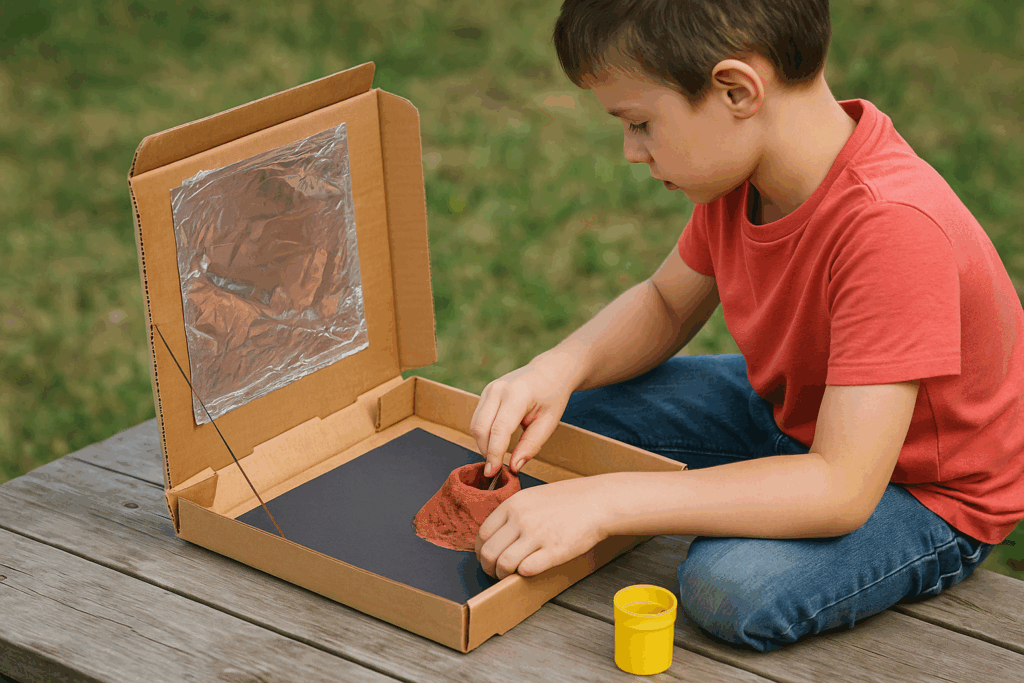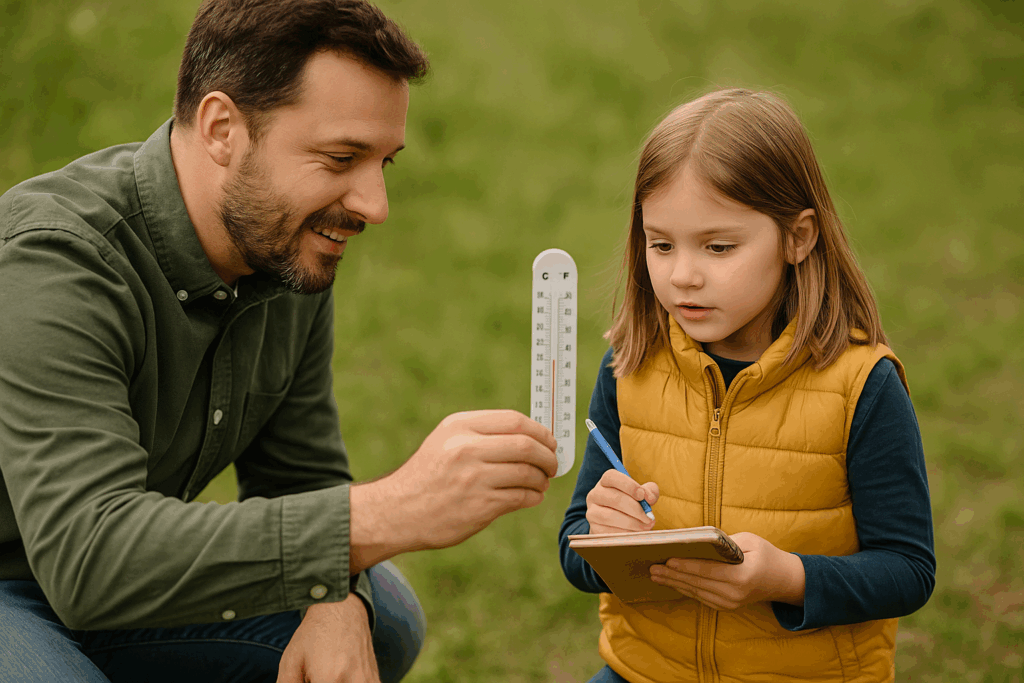Outdoor STEM Activities: Learning Science Through Nature Exploration
We may earn a commission for purchases made using our links. Please see our disclosure to learn more.
Bringing kids outdoors isn’t just about fun—it’s a meaningful opportunity for learning. Through outdoor STEM activities, a simple park stroll can become a science experiment, and your backyard can transform into a mini engineering hub. These hands-on experiences encourage kids to explore their surroundings while strengthening critical thinking and problem-solving skills. Whether you’re a parent, educator, or nature lover, these engaging ideas make learning science both memorable and screen-free.
Why Outdoor STEM Learning Matters
Children learn best when they’re curious, moving, and actively engaged. Outdoor STEM learning leverages the natural environment to teach science, technology, engineering, and math in meaningful, tangible ways.
Here’s why it works:
- Multi-sensory learning: Kids use sight, touch, sound, and movement.
- Real-world connection: Abstract concepts become relevant and understandable.
- Boosts creativity and teamwork: Most activities involve design, observation, or group work.
- Supports physical and mental health: Fresh air, sunshine, and curiosity are a winning combo.

Top Outdoor STEM Activities to Try Today
These activities are fun, educational, and easy to set up with minimal materials.
Nature Scavenger Hunt
Create a list of natural items—like a pinecone, a smooth rock, or a feather. As kids collect and examine each item, ask questions like:
- What texture does it have?
- Why might it be shaped this way?
- What role does it play in its environment?
Graph different leaf types for a bonus math lesson.
DIY Weather Station
Let your child become a junior meteorologist. Set up a simple weather station using:
- A thermometer
- A rain gauge (a clear water bottle with markings)
- A wind sock (made from fabric or a plastic bag)
- A cloud chart for sky observation
Track daily changes and chart the data for patterns.
Build a Mini Water Filtration System
Using a plastic bottle, gravel, sand, and cotton balls, kids can mimic natural water filtration. Pour dirty water through each layer and watch it transform.
This teaches earth science, filtration, and water conservation.
Solar Oven S’mores
Construct a solar oven from a pizza box, foil, and plastic wrap. Place a graham cracker, marshmallow, and chocolate inside and let the sun do the work.
It’s a delicious way to explore heat absorption and solar energy.
Bug Observation Station
Set out a magnifying glass, bug jar, notebook, and markers. Encourage kids to carefully observe insects and record their findings.
Ask questions like:
- How many legs does it have?
- Does it fly or crawl?
- What plants does it prefer?
This activity builds classification skills and curiosity.
Backyard Volcano
Mix baking soda, vinegar, and dish soap in a model volcano for a foaming eruption.
Teach concepts like:
- Chemical reactions
- Earth layers and volcanic activity
- Cause and effect
Add measurements to track eruption size for a STEM bonus.
🧠 What Science Says About Outdoor STEM Learning
If you’re wondering whether outdoor STEM activities are just fun or truly educational, science has an answer: they’re both.
Nature Environments Foster Early STEAM Learning
According to a 2024 study in Education Sciences, nature-based outdoor learning significantly improves STEAM concept development in preschoolers. Kids in nature-rich environments ask more questions, test ideas, and learn through play-driven experimentation—skills critical to early STEM understanding.
Outdoor Learning Boosts Engagement and Academic Gains
A systematic review of 147 studies (2000–2020) found that outdoor learning enhances engagement, academic performance, and well-being. These programs foster collaboration and improve students’ attitudes toward school—proving that nature is a powerful classroom.

How to Set Up a Nature-Based STEM Station
You don’t need fancy tools—just a few basics and an open space.
- Choose a safe, shaded outdoor spot (like a backyard or park).
- Use bins to store magnifying glasses, string, rulers, paper, and tape.
- Post a “STEM Challenge of the Week” sign for kids to follow.
- Let them explore and journal what they see, measure, or build.
A consistent space invites repeated exploration and discovery.
Tools and Supplies You’ll Need
While nature itself is your best resource, the right tools can enrich the learning experience. Check out these Amazon-recommended products:
🧰 Top Amazon Picks for Outdoor STEM
- Nature Exploration Kit for Kids – Includes binoculars, magnifier, compass, and journal
- Weather Science Lab Kit – Great for teaching climate and meteorology
- Solar Oven Kit – Learn solar energy with a fun cooking project
- Volcano Experiment Kit – Easy-to-use kit for a classic STEM activity
- Portable Field Microscope – For up-close exploration of insects, leaves, and soil
Tips for Parents and Educators
- Let kids lead: Ask open-ended questions instead of giving instructions.
- Celebrate the mess: Failure and chaos are part of discovery.
- Combine learning with story time: Read nature-themed books before the activity.
- Incorporate tech wisely: Explore advanced robotics for home use as a way to connect STEM with real-world technology.
- Track discoveries: Use journals, voice memos, or drawings to capture learning moments.
Conclusion
Outdoor STEM activities spark joyful, meaningful learning that sticks. They transform curiosity into real understanding and make fresh air the perfect setting for discovery. Whether your child is charting clouds, unearthing bugs, or crafting a soda volcano, they’re doing more than playing—they’re laying the groundwork for a future shaped by creativity and innovation.
So head outside, let their curiosity lead, and watch the world of science unfold before you.
FAQs
What age is best for outdoor STEM activities?
From toddlers to tweens, all kids can benefit. Tailor activities to match their developmental level and interests.
Can I do outdoor STEM with minimal supplies?
Yes! Many activities need only natural items like leaves, rocks, water, or sunlight.
How do outdoor STEM activities support school curriculum?
They reinforce core concepts in math, science, and engineering while enhancing problem-solving and observation skills.
Are these activities safe for toddlers?
With supervision, absolutely. Focus on sensory bins, leaf matching, and simple water play.
How often should I plan outdoor STEM sessions?
Start with one or two times a week. Use seasonal themes—like weather in spring or bugs in summer—to keep it engaging.




